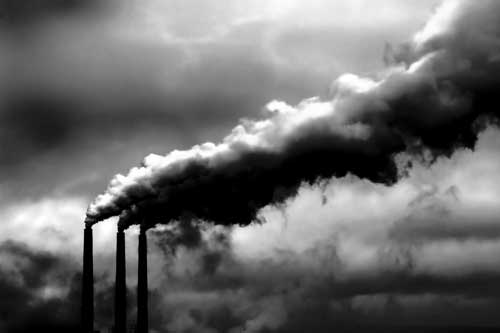PSC Questions Cost of Cutting Emissions
Public Service Commissioner Nowak warns federal carbon-emission rule could cost $20 billion. But is the estimate accurate?
Public Service Commissioner Ellen Nowak is a respected lawyer who has worked – in the background, away from TV lights and reporters – as a senior staffer to Republican elected officials and Waukesha County leaders.
Although Nowak has worked with – and for – bomb-throwing politicos, that’s not her style. She prefers research to sound bites, so her 2011 appointment to the utility-regulating PSC made sense.
Buried in rate-return numbers and numbing minutiae, Wisconsin’s three Public Service commissioners are so insulated that the agency’s Website has this warning:
“Any communications with individual commissioners on contested cases before the commission may constitute a prohibited ex parte communication. If you wish to comment on the record … do not contact individual commissioners.”
All of which made Nowak the perfect choice to be PSC’s point person on what the U.S. Environmental Protection Agency’s proposed on June 2 – a 30% cut in carbon-related coal emissions nationally by 2030.
In a WisconsinEye interview, Nowak left her bureaucratic den to outline what the federal plan to fight global climate change – even in its first-draft form – could mean for Wisconsin.
“It’s going to have a major impact on our economy,” Nowak warned.
Specifically:
*If the EPA rule becomes final, and is upheld after lawsuits that may reach the U.S. Supreme Court, it could force changes that could cost Wisconsin businesses, utilities and bill-paying customers between $10 billion and $20 billion by 2030.
*Some of Wisconsin’s most productive coal-burning plants – those in Pardeeville, Pleasant Prairie, Weston and Oak Creek , for example – couldn’t meet the new standard and have to shut down. Those are “baseline” plants that provide most of the electricity that runs Wisconsin, Nowak noted.
The Milwaukee Journal Sentinel reported that 51% of the state’s power came from coal in 2012 – more than the U.S. average of 37%.
*Power plants that run on natural gas would be unable to meet the additional demand resulting from the closing or lowered production of coal-burning plants, requiring major investments not only in generating capacity but in new delivery systems.
*Wisconsin would be especially hurt by the EPA rule because its economy depends so heavily on electricity-gobbling manufacturing.
*It’s unfortunate that the Kewaunee nuclear power plant shut down last year, since long-range EPA goals say nuclear plants, wind turbines and solar power could offset electricity lost because the limit on burning coal.
Maybe, Nowak observed, it’s time to rethink the state law banning new nuclear plants.
Nowak conceded the EPA rule is not yet final, could still be changed and might not survive in court. And, the new president who takes office in January 2017 could decide to keep, kill or revise EPA’s dictate.
But President Barack Obama clearly wants fighting climate change as part of his legacy, she noted.
The EPA also says the new standard will save lives: “The Clean Power Plan will lead to climate and health benefits worth an estimated $55 billion to $93 billion in 2030, including avoiding 2,700 to 6,600 premature deaths and 140,000 to 150,000 asthma attacks in children.”
“EPA’s analysis is that by the time the targets are reached (in 2030) the proposed rule – if adopted – will result in energy bills that are 8% lower than they would be without the rules,” Reopelle explained.
Other statements by Nowak need perspective, Reopelle added.
For example, Reopelle said, Wisconsin’s 34% cut in carbon emissions amounts to an 18.6% cut in “actual emissions.”
And, Reopelle said, there is “no requirement” that any of Wisconsin’s coal-burning utility plants shut down.
“The plants aren’t built to last forever, so they will shut down some day presumably – but not necessarily because of the rule EPA has proposed,” Reopelle added. “The proposal gives the states complete flexibility in how they reach the target goal.”
Nowak said the PSC and state Department of Natural Resources are working closely to respond to EPA’s draft rule. Stay tuned, she advised.
Steven Walters is a senior producer for the non-profit public affairs channel WisconsinEye. Contact him at stevenscwalters@gmail.com
The State of Politics
-
A Wisconsin Political Trivia Quiz
 Dec 15th, 2025 by Steven Walters
Dec 15th, 2025 by Steven Walters
-
The Fight Over Wisconsin’s House Districts
 Dec 8th, 2025 by Steven Walters
Dec 8th, 2025 by Steven Walters
-
The Battle Over On-Line Betting
 Nov 24th, 2025 by Steven Walters
Nov 24th, 2025 by Steven Walters
















